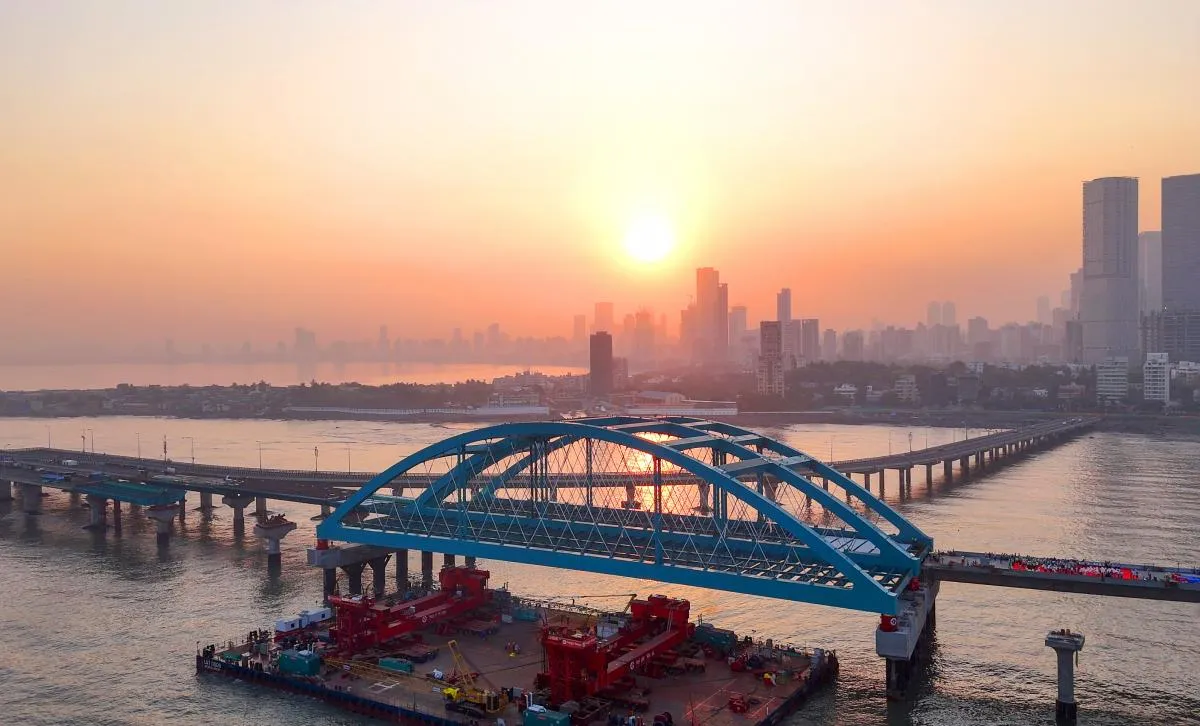
Two arch bridges have been floated onto site and then lifted into place as part of the 29km Mumbai Coastal Road-Bandra Worli Sea Link project.
Barges carrying the steel girder bow-string bridges secured them into position while lifting took place at night, according to local media reports.
When finished, the eight-lane Mumbai Coastal Road in Mumbai’s Worli peninsula will cut travel time between south Mumbai and the western suburbs from two hours to 40 minutes. The client is Brihanmumbai Municipal Corporation (BMC).
The cable-stayed 5.6km Bandra-Worli Sea Link - officially the Rajiv Gandhi Sea Link – is eight lanes wide and links Bandra in the Western Suburbs of Mumbai with Worli in South Mumbai. It is the longest sea bridge, as well as the 5th longest bridge in India after the Mumbai Trans Harbour Link, Bhupen Hazarika Setu, Dibang River Bridge and Mahatma Gandhi Setu.
The new steel girder arch bridges, one for southbound traffic and one for northbound, were built at the nearby Mazagon Dock's Nhava unit. They are part of the main project being delivered by the joint venture of Hindustan Construction Company and the Hyundai Development Corporation. AECOM is the general engineering consultant for the project and Freight Wings is providing the transportation and lifting services.
Paving of the bridges should be finished by the end of June. The steel arch structures are part of the 850m-long bridge that includes concreted sections adjoining both ends of the steel arch bridges to complete the crossing.







